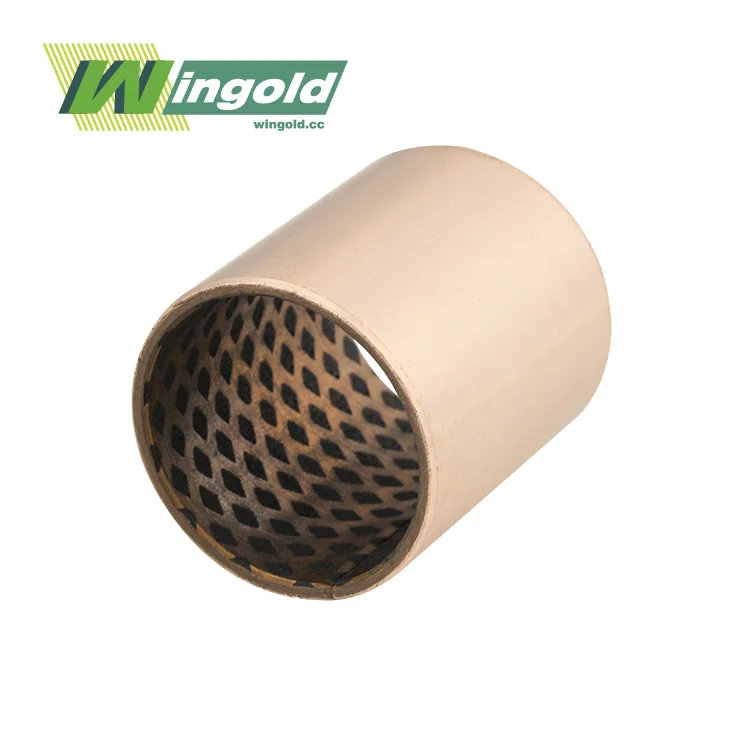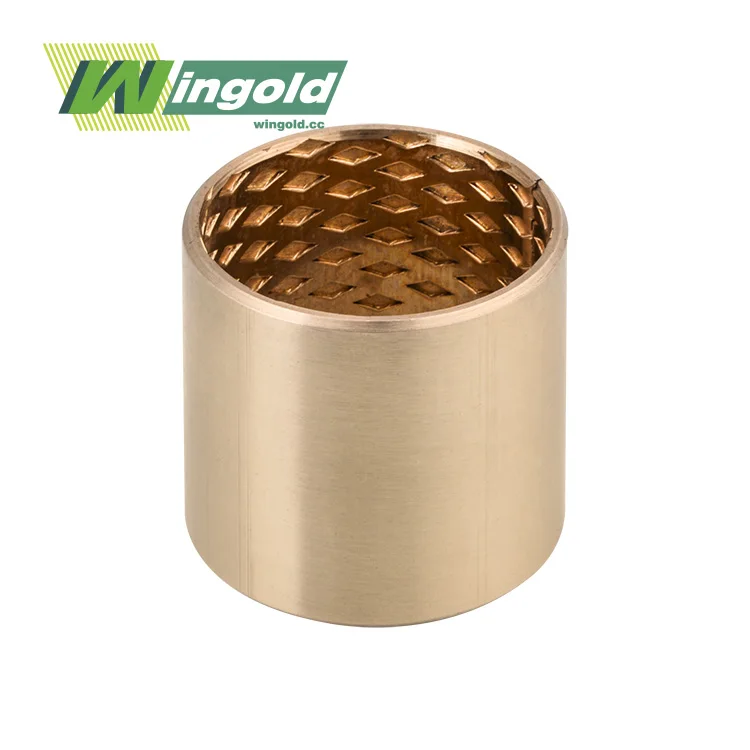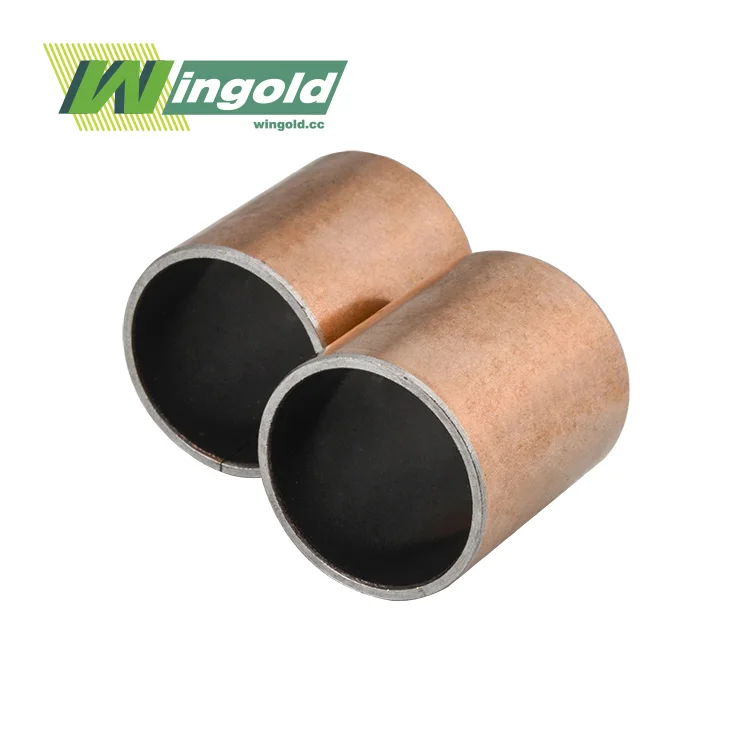Introducing POM Composite Bushings: Advantages and Applications
What are POM Composite Bushings?
POM composite bushings are high-performance bearings that combine the excellent mechanical properties of polyoxymethylene (POM) with carefully selected reinforcing materials. These bushings are engineered to excel in demanding applications across various industries, offering superior wear resistance, low friction, and outstanding dimensional stability.
Key Advantages of POM Composite Bushings
POM composite bushings boast several advantages that make them an attractive option for many applications:
- Superior Wear Resistance: POM composite bushings exhibit exceptional resistance to wear, ensuring a longer service life and reduced maintenance costs. This makes them ideal for applications with high cyclic loads or frequent movement.
- Low Friction Performance: The self-lubricating characteristics of POM composite bushings result in remarkably low friction coefficients. This reduces energy consumption and heat generation, enhancing overall efficiency and prolonging equipment life.
- Excellent Dimensional Stability: These bushings maintain their shape and dimensions regardless of fluctuations in applied loads and ambient temperatures, ensuring consistent performance and precision in machinery operation.
- Chemical Resistance: POM composite bushings demonstrate outstanding resilience against a wide spectrum of chemicals, making them suitable for harsh environments or applications exposed to diverse substances.
- Noise Reduction: The unique composition of POM composite bushings helps dampen vibrations and reduce noise levels, contributing to quieter and more streamlined equipment operation.
Applications of POM Composite Bushings
POM composite bushings find applications in numerous industries due to their versatile properties:
- Automotive: Used in steering systems, suspension components, and pedal assemblies
- Aerospace: Applied in aircraft seating mechanisms and cargo handling systems
- Industrial Machinery: Utilized in conveyor systems, packaging equipment, and robotic arms
- Medical Equipment: Incorporated in hospital beds, wheelchairs, and diagnostic machines
- Consumer Goods: Found in appliances, office furniture, and sporting equipment
Bronze Bushings: Traditional Reliability and Strength
What are Bronze Bushings?
Bronze bushings are cylindrical bearings made from various bronze alloys, primarily copper alloyed with tin, lead, or other elements. These bushings have been used in industry for centuries due to their robust nature and reliable performance under certain conditions.
Key Advantages of Bronze Bushings
Bronze bushings offer several benefits that have kept them relevant in many applications:
- High Load Capacity: Bronze bushings can withstand high loads, making them suitable for heavy-duty applications.
- Thermal Conductivity: They efficiently dissipate heat, which is beneficial in high-speed or high-load scenarios.
- Corrosion Resistance: Bronze bushings exhibit good resistance to corrosion, especially in marine environments.
- Emergency Running Properties: In case of lubrication failure, bronze bushings can continue to operate for a short period without catastrophic failure.
- Wide Temperature Range: Bronze bushings can operate effectively in both very low- and very high-temperature environments.
Applications of Bronze Bushings
Bronze bushings are widely used in various industries:
- Marine: Used in propeller shafts, rudder bearings, and other underwater applications, POM composite bushing materials are often employed due to their excellent wear resistance, low friction, and superior performance in water-lubricated environments.
- Heavy Machinery: Applied in construction equipment, mining machinery, and agricultural implements
- Oil and Gas: Utilized in pumps, valves, and other high-pressure equipment
- Aerospace: Found in landing gear components and certain engine parts
- Industrial: Used in steam turbines, hydraulic cylinders, and material handling equipment
Comparative Analysis: POM Composite vs Bronze Bushings
Performance Characteristics
When comparing POM composite bushings to bronze bushings, several performance characteristics come into play:
- Friction: POM composite bushings generally offer lower friction coefficients (0.05-0.20) compared to bronze bushings (typically 0.08-0.12 when lubricated). This translates to reduced energy consumption and wear in many applications.
- Load Capacity: Bronze bushings traditionally have higher load capacities, but modern POM composite bushings can handle loads up to 140 MPa, rivaling many bronze options.
- Wear Resistance: POM composite bushings often exhibit superior wear resistance, especially in applications with frequent movement or inadequate lubrication.
- Chemical Resistance: POM composite bushings generally offer better resistance to a wider range of chemicals compared to bronze bushings.
- Temperature Range: While bronze bushings can operate in a wider temperature range, POM composite bushings perform exceptionally well within their operational range (-40°C to 120°C).
Maintenance and Lubrication Requirements
Maintenance needs differ significantly between these two bushing types:
- POM Composite Bushings: These are self-lubricating and generally require no additional lubrication throughout their service life. This significantly reduces maintenance requirements and associated costs.
- Bronze Bushings: Traditional bronze bushings typically require regular lubrication to maintain optimal performance and prevent wear. This increases maintenance frequency and operational costs.
Cost Considerations
When evaluating the cost-effectiveness of POM composite bushings versus bronze bushings, consider:
- Initial Cost: Bronze bushings often have a lower upfront cost compared to POM composite bushings.
- Lifetime Cost: POM composite bushings may offer lower lifetime costs due to reduced maintenance requirements and longer service life in many applications.
- Installation Cost: POM composite bushings are typically lighter and easier to install, potentially reducing installation costs.
- Replacement Frequency: In applications where POM composite bushings outperform bronze in terms of wear resistance, replacement frequency and associated costs may be lower.
Conclusion
Choosing between POM composite bushings and bronze bushings requires careful consideration of your specific application requirements. POM composite bushings offer advantages in terms of low friction, wear resistance, and maintenance-free operation, making them ideal for many modern applications. Bronze bushings, with their high load capacity and thermal conductivity, remain the preferred choice in certain heavy-duty and high-temperature scenarios.
At Wingold Bearing, we specialize in providing customized self-lubricating bearing solutions to meet your unique needs. Our extensive range of bushing types and materials, including both POM composite and bronze options, allows us to offer the best solution for your application. With our factory-direct pricing, fast manufacturing, and flexible ordering options, we're committed to delivering high-quality, cost-effective bushing solutions.
If you're unsure which bushing type is right for your application, or if you need more information about our products, don't hesitate to reach out to our team of experts. Contact us at info@wingold.cc for personalized assistance in selecting the optimal bushing solution for your needs.
FAQ
Can POM composite bushings replace bronze bushings in all applications?
While POM composite bushings can replace bronze in many scenarios, they're not universal replacements. High-temperature or extremely high-load applications may still require bronze bushings.
Are POM composite bushings more expensive than bronze bushings?
Initially, POM composite bushings may have a higher cost. However, their longer lifespan and reduced maintenance needs often make them more cost-effective in the long run.
How long do POM composite bushings typically last?
The lifespan of POM composite bushings varies depending on the application, but they often outlast traditional bronze bushings, especially in applications with frequent movement or inadequate lubrication.




